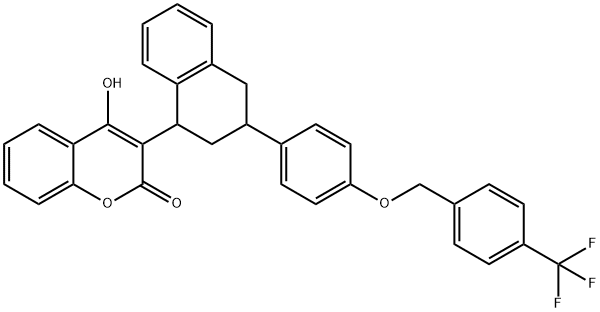Uses
Flocoumafen is used to control rodents around buildings. It also
has some use in field and plantation crops including cocoa, cotton, oilpalm,
rice and sugar cane.
Uses
Flocoumafen is a second-generation anti-coagulant used as a rodenticide. It has a very high toxicity and is restricted to indoor use and sewers (in the United Kingdom). This restriction is mainly due to the increased risk to non-target species. Studies have shown that rodents resistant to first-generation anti-coagulants can be adequately controlled with flocoumafen. The chemical substance is off-white solid, does not mix well with water (1.1 mg/L), and is sparingly soluble in acetone, ethanol, xylene, and octanol. Flocoumafen is stable to hydrolysis. Because of the acute toxicity of flocoumafen and its intended use as a rodenticide, chronic toxicity studies have not been reported. However, flocoumafen is known to cause adverse health effects and abnormal prothrombin.
Definition
ChEBI: Flocoumafen is a ring assembly, a member of naphthalenes and a member of benzenes.
Metabolic pathway
Flocoumafen exists as cis and trans isomers (Scheme 1). The tetralin ring
adopts its most stable conformation in each case and the two forms have
very similar shapes. Both are active rodenticides. The fate of flocoumafen
in soils and plants has not been studied in detail because the compound is
usually used as a pelleted bait or in a wax block. This limits its dissipation
in the environment. Studies in animals and birds have been conducted
as part of the assessment of safety and to investigate mode of action.
Metabolism is slow in the rat and rapid in Japanese quail but this difference
should be interpreted with care because of the 100-fold difference
in dose used (see also Overview).
Degradation
Flocoumafen is a stable compound; no detectable degradation occurs at
50 °C at pH 7-9 over 4 weeks.



